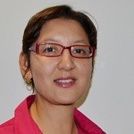Article
Epidermolysis Bullosa Causes Significant Burden for Patients, Families, and HCPs
Author(s):
Most research into the rare condition is focused on therapies and diagnostics, but investigators say it is important to better understand the disease’s impact on those around the patient.
Antoinette V. Chateau, BSC

Patients with epidermolysis bullosa (EB) experience a significant impact on their quality of life, but a new report is calling attention to the ways the disease can impact members of the patients’ families, as well as the healthcare professionals treating them.
Epidermolysis bullosa is a rare form of genodermatosis that causes mucocutaneous fragility, explained the review’s authors, including corresponding author Antoinette V. Chateau, BSC, MBCHB, of the Grey’s Hospital, in South Africa.
The global prevalence is just 19.57 cases per 1 million live births. The disease has 4 groups and 30 subtypes, and patient prognosis varies subtype, they said.
“The clinical presentation and complications vary from very limited vesicles or nail involvement to extensive disease resulting in skeletal deformity, systemic manifestations, and malignancy,” Chateau and colleagues wrote.
Though the disease can have a dramatic impact on the lives of patients, most of the research into the condition has focused on diagnostics and therapies. Less has been written about how the burden of the disease affects healthcare providers or other family members, such as parents and siblings.
Chateau and colleagues decided to search for peer reviewed qualitative, quantitative, or mixed-methods studies and case reports that included data on the psychological impacts of EB on parents, caregivers, or siblings of children with EB or on healthcare professionals.
After exclusions, they found a total of 27 relevant studies. A number of themes emerged from the literature, the authors said.
“Having a child with a potentially life-limiting disease, depending on the subtype, can be devastating for the parents and the family as a whole,” Chateau and colleagues wrote. Thus, they said, strong family bonds and support systems are critical.
The disease can also have a significant impact on the relationships of the parents and can affect parents’ decisions on whether to have more children. Chateau and colleagues said families should be sure to prioritize less-stressful family time, such as vacations and recreation, in order to prevent family breakdown.
The team also noted that the data show women typically take on a greater burden when it comes to caring for patients; fathers ought to be intentional about helping to care for children, they wrote.
In the studies, parents said rapid referrals to specialists are important, but they also noted that the disease brings with it significant burdens, including the cost of care and difficulties with understanding how best to care for their children.
Data on the impact of EB on patient siblings were rare, but Chateau and colleagues said the disease can lead to both practical and emotional implications for children. Siblings sometimes feel guilt that they did not get the disease, but at other times they can be overtaken by fear for their sibling or resentment about the way the sibling’s condition has burdened their family.
Siblings were also affected if parents did not adequately prepare them for what they might experience when visiting their sibling in the hospital.
The genetic implications of the condition also create difficult decisions for parents about what to tell their other children, and when.
Finally, the authors discussed the disease’s effects on healthcare professionals treating patients with EB. They said strong doctor-patient relationships are key, but that physicians should also adopt a comprehensive, multi-disciplinary approach to ensure families are empowered and well cared-for.
“It is vital to be cognizant of these dynamics and be holistic and comprehensive in addressing the family’s challenges, difficulties, and needs,” the team wrote.
Physicians can expect significant challenges, including a lack of available EB specialists, and ethical questions such as whether to offer life-extending therapy and/or life-shortening pain relief.
“To cope, [healthcare professionals] require self-care strategies, debriefing, and being part of support groups,” Chateau and colleagues wrote. “They should not work in isolation but rather in a multidisciplinary team, having access to psychological support, and reducing compassion fatigue and burnout.”
The investigators closed by calling for more research, both to address gaps in knowledge about the burden of EB, and to consider the cultural contexts of patients and families.
The study, "The impact of epidermolysis bullosa on the family and healthcare practitioners: a scoping review," was published online in the International Journal of Dermatology.





